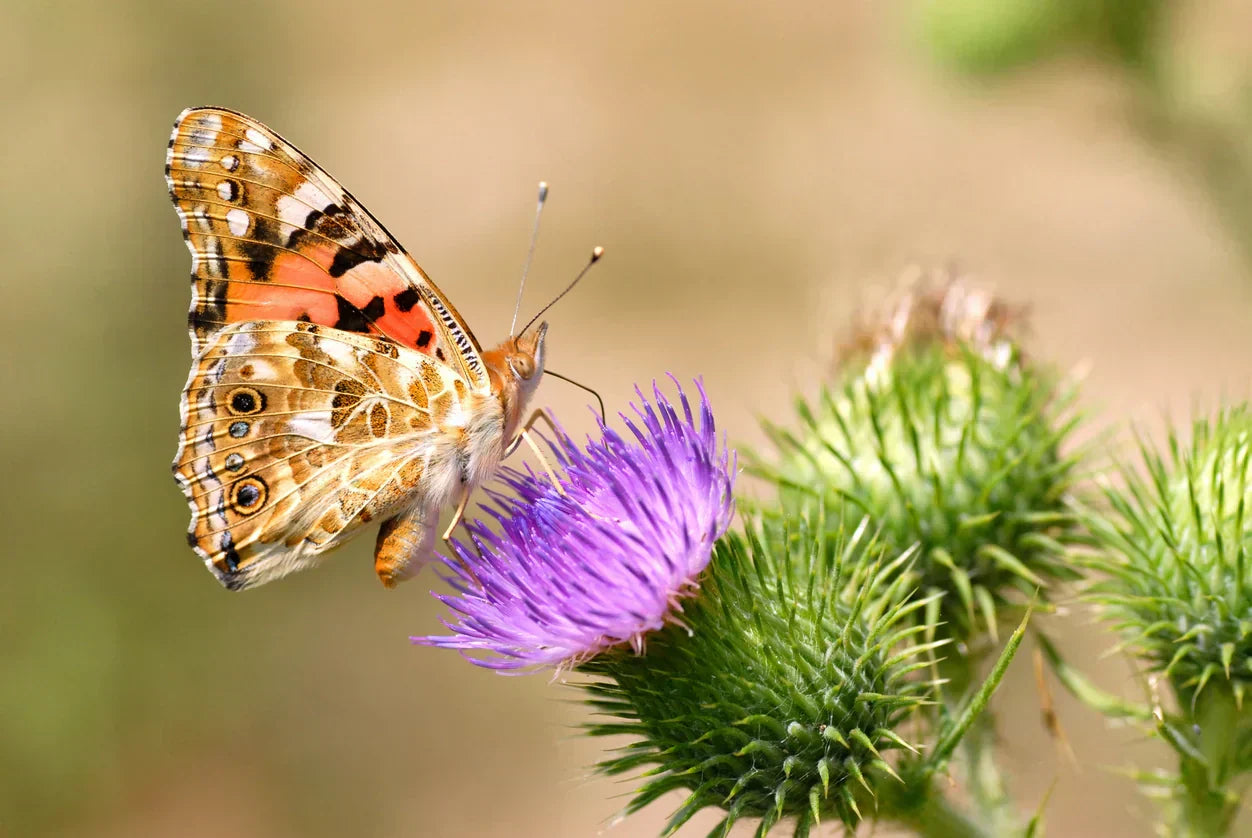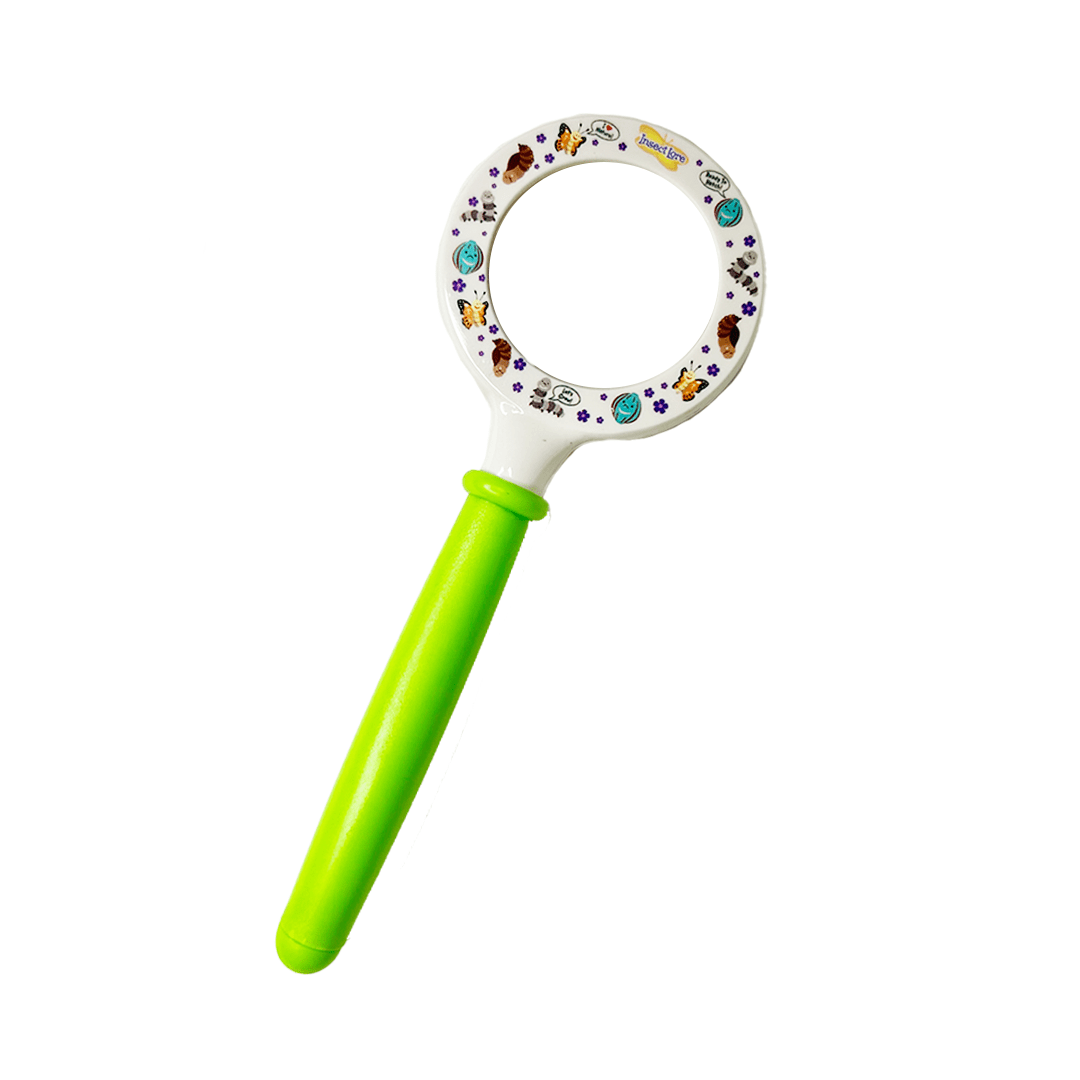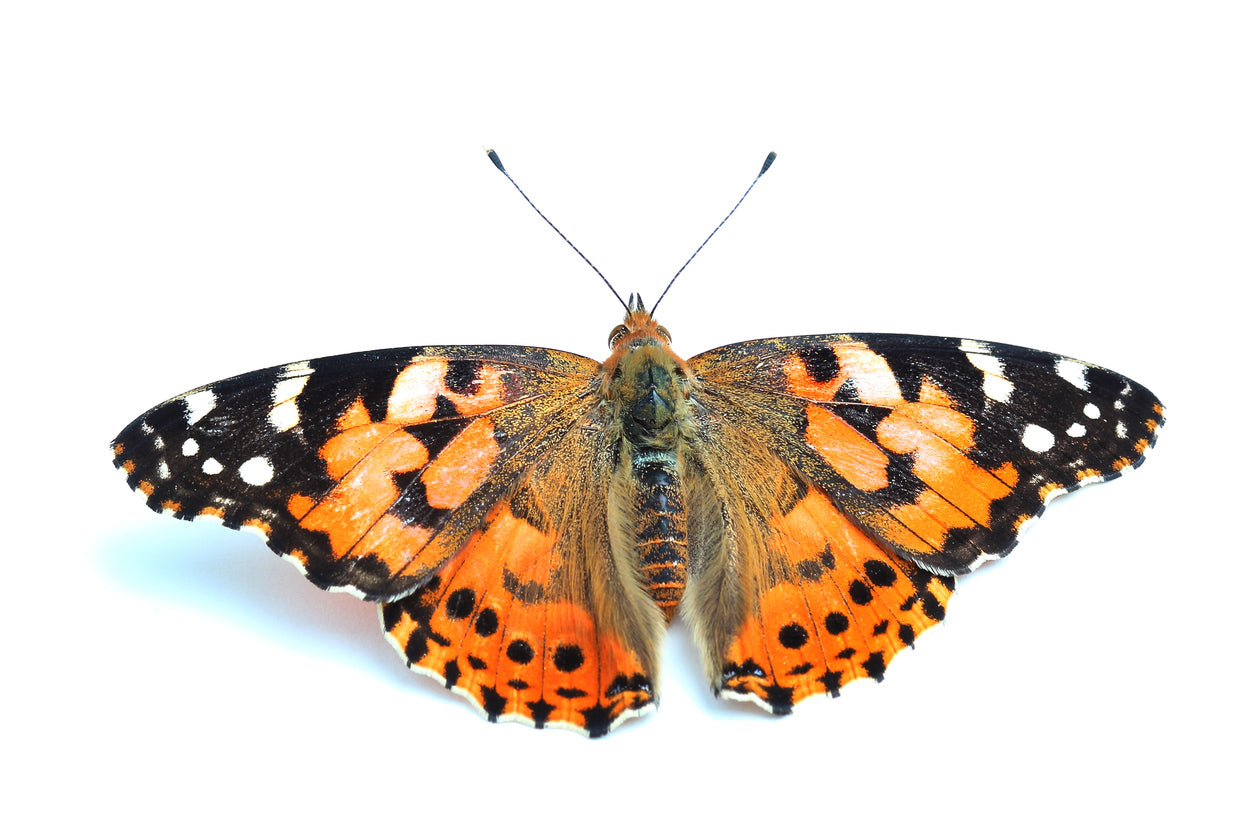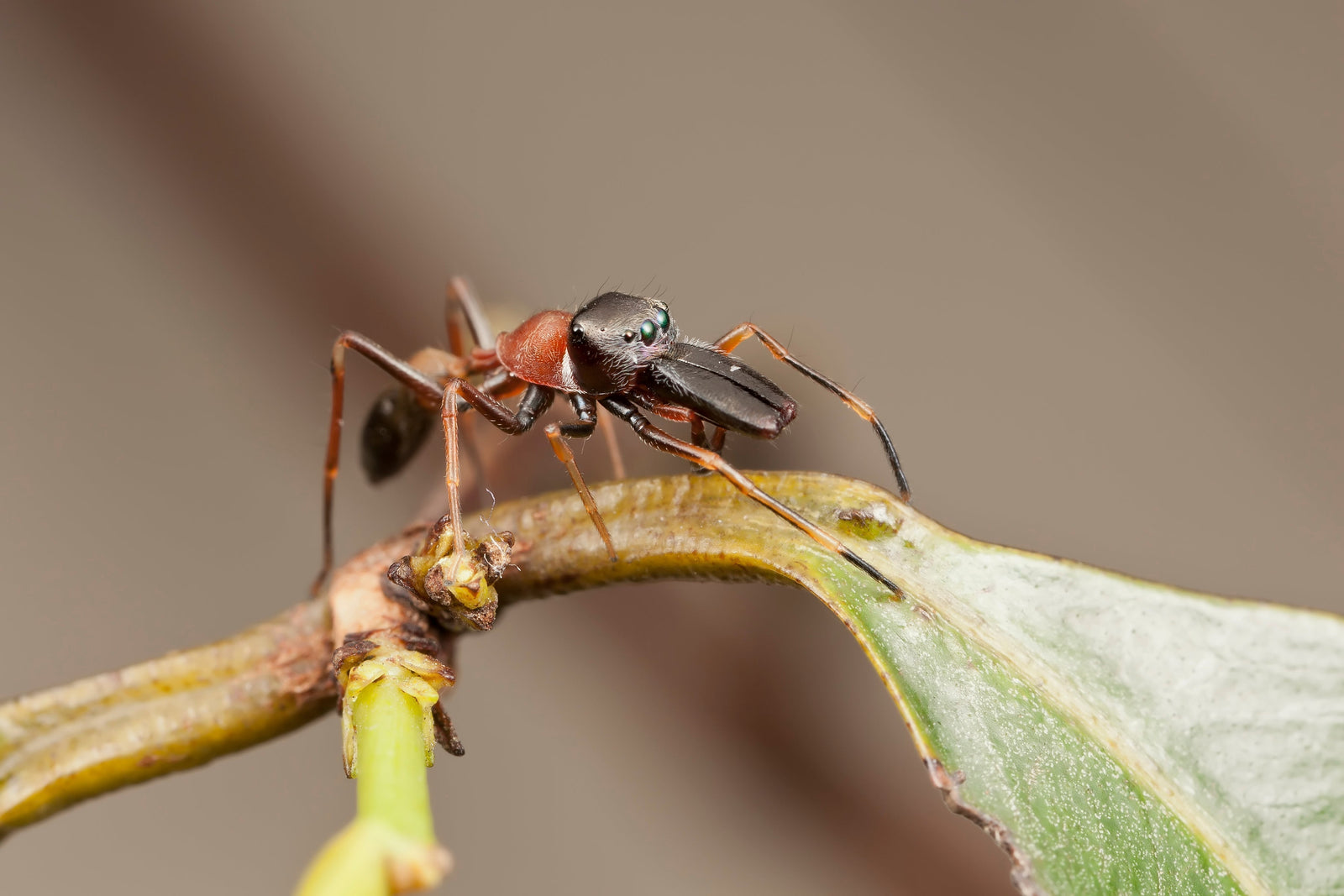Add description, images, menus and links to your mega menu
A column with no settings can be used as a spacer
Link to your collections, sales and even external links
Add up to five columns
Add description, images, menus and links to your mega menu
A column with no settings can be used as a spacer
Link to your collections, sales and even external links
Add up to five columns

Best Host Plants for Painted Lady Butterflies
By Spencer McManamna April 10, 2024 3 min read
In the world of nature, certain species rely heavily on specific plants for sustenance and survival. In the realm of Lepidoptera, the relationship between butterflies and their host plants is a fundamental aspect of their life cycle. When discussing the captivating Painted Lady butterfly (Vanessa cardui), understanding the concept of a "host plant" is very important. Host plants serve as the primary food source for the larvae, or caterpillars, of these unique insects.
In this article, you'll learn about the significance of host plants for Painted Lady butterflies and caterpillars, how they attract butterflies, and explore their crucial role in the wild world of nature.
How Do Painted Lady Butterflies and Caterpillars Use Host Plants?
Host plants play a critical role in the lifecycle of Painted Lady butterflies (Vanessa cardui) and their caterpillars by serving as the primary food source and habitat. Female Painted Lady butterflies carefully select host plants on which to lay their eggs, typically preferring species such as thistles, mallows, and various legumes.
Upon hatching, Painted Lady caterpillars feed voraciously on the leaves of their host plants, rapidly growing and developing through multiple instars. The nutritional content of the host plants is essential for the caterpillars' growth and metamorphosis into adult butterflies. Additionally, host plants provide shelter and camouflage for the developing caterpillars, aiding in their protection from predators.
What Plants Do Painted Lady Butterflies Lay Their Eggs On?
Painted Lady butterflies (Vanessa cardui) have a broad appetite for a wide and diverse array of host plants on which to lay their eggs. That's why they are Insect Lore's choice of butterfly for all of our growing kits!
Asteraceae
One common choice for our Painted Lady friends is plants belonging to the Asteraceae family, such as thistles. Thistles are characterized by their prickly stems and distinctive, often purple, flower heads. These plants provide a bevy of nutrition for Painted Lady caterpillars.
Malvaceae
Another favored host plant family is Malvaceae, with mallows being particularly favored. Mallows are known for their showy, cup-shaped flowers and soft, lobed leaves. Painted Lady butterflies are drawn to these plants for egg-laying due to their lush foliage, which supports healthy caterpillar development.
Fabaceae
Various legume species, belonging to the Fabaceae family, serve as favored host plants for Painted Lady butterflies. Legumes such as alfalfa (Medicago sativa) and clover (Trifolium) are among the preferred choices. These plants are characterized by their compound leaves with small, clustered flowers. Legumes provide essential nutrients for the developing caterpillars, contributing to their growth and development on the road to getting their wings.
What Do Painted Lady Caterpillars Eat?
Painted Lady caterpillars (larvae) exhibit a voracious appetite for a variety of host plants, each offering essential nutrients crucial for their growth and development. In addition to thistles mentioned above, another preferred food choice for Painted Lady caterpillars comes from the Malvaceae family, particularly mallows (Malva).
Mallows are recognized for their cup-shaped flowers and soft, lobed leaves. The lush foliage of mallows serves as a nutritious feast for the caterpillars, contributing to their robust development.
Additionally, various legume species within the Fabaceae family, such as alfalfa (Medicago sativa) and clover (Trifolium), are favored by Painted Lady caterpillars. These legumes offer vital nutrients essential for the caterpillars' growth, ensuring their progression toward adulthood.
What Do Painted Lady Butterflies Eat?
Painted Lady butterflies (Vanessa cardui) display a preference for nectar-rich flowers, which serve as their primary food source during adulthood. They are known to have a broad range of plant preferences, often drawn to species within the Asteraceae family, such as asters (Aster).
Asters are characterized by their daisy-like appearance and come in various colors, providing abundant nectar for Painted Lady butterflies. Another favored choice among their diet are plants within the Lamiaceae family, including lavender (Lavandula). Lavender is recognized for its fragrant, purple-hued flowers that attract a myriad of pollinators, including Painted Lady butterflies. The nectar produced by lavender serves as a valuable energy source for these delicate insects as they flutter from flower to flower in search of sustenance.
Furthermore, Painted Lady butterflies are attracted to plants within the Fabaceae family, such as legumes like clover (Trifolium) and alfalfa (Medicago sativa). These plants offer abundant nectar reserves housed within their clustered flowers, making them enticing feeding spots for Painted Lady butterflies. Additionally, they are also known to visit plants from the Boraginaceae family, such as borage (Borago officinalis). Borage is recognizable by its star-shaped blue flowers and is highly attractive to various pollinators, including Painted Lady butterflies seeking nourishment.
Related products
Also in Butterflies

Enter Your Voucher Code Below
If you are experiencing difficulty redeeming your voucher on your desktop, please use a mobile device for a better redeeming experience.

We are unable to combine redemption fees. If you are redeeming 1-5 voucher codes, please complete separate purchases through our website for each voucher. If you are redeeming 6+ vouchers, please email us at customerservice@insectlore.com with your voucher codes and shipping address and we'll send you a custom invoice for payment.
Thank you for Redeeming your voucher!
You redeemed a $title

Don't miss this special one Time Offer.
Check the Box to Add this Special Offer to your Cart

Don't miss this special one Time Offer.
Check the Box to Add this Special Offer to your Cart
It looks like you are an Insect Lore UK/EU customer! You are visiting the Insect Lore USA website.
Click Insect Lore UK/EU website to be redirected to insectlore.co.uk.







